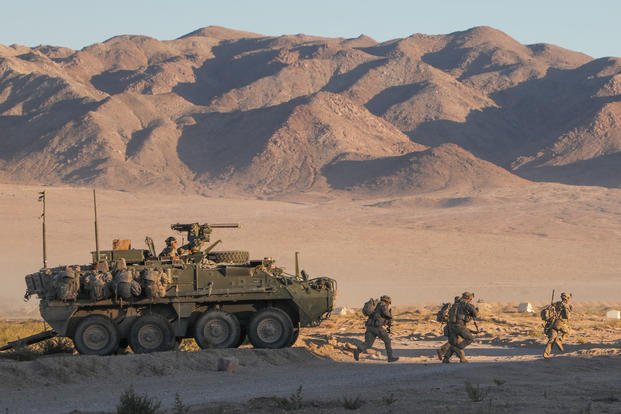U.S. Army leaders are working on a plan to re-start large-scale training in the operational force, but it will likely be up to unit commanders from installation to installation to decide when training will resume again.
"We are ... taking a hard look at how we get back to collective training both at home station and our combat training centers," Army Chief of Staff Gen. James McConville said today during a Pentagon briefing.
"Getting back to collective training is crucial, but we need to make sure we have the right measures in place first. ... It's not going to be a one-size-fits-all solution."
The Army has proposed a "risk-mitigation framework" to Secretary of Defense Mark Esper, so that "we can safely return to training," Secretary of the Army Ryan McCarthy said during the briefing.
Related: Here's How the Army Is Planning to Restart Training for Large Combat Units
"The virus did not impact the country uniformly, so we need to tailor our approach to the reopening by developing Army-wide standards and protocols," McCarthy said.
The Army halted rotations to the National Training Center at Fort Irwin, California and the Joint Readiness Training Center in Fort Polk, Louisiana in mid-March to limit the spread of the virus.
NTC, JRTC and Joint Multinational Readiness Center at Hohenfels, Germany, hold brigade-level training exercises for armor, infantry and Stryker brigade combat teams and are a key measurement for the service's combat readiness.
So far, four BCTs have had their combat training center, or CTC, rotations postponed, a senior Army official told Military.com.
"We were able to look into the future and decide we could delay their rotation until a later date," the senior official said.
CTC rotations are important "because it's a deployment of a force to a combat training center, a redeployment of that force back its home station, but it's also a force-on-force [exercise]," the official said.
"While those are important, there is a whole host of training that goes on at our home stations that has to happen in places like Fort Campbell, Kentucky before you go to those combat training centers."
The framework is being designed so commanders can make training decisions based on their capacity for testing, treatment and monitoring, as well as the trends in COVID-19 cases in their area of the country, the official said.
"It will depend on the amount of testing capability and capacity that they have at that installation to say, 'listen this battalion is going to the field for two weeks; they are probably going to want to test that entire battalion before they go to the field,'" the official said. "If the local rate is really bad, then they probably need to do more testing; but if the local rate is better, then maybe they don't need to do as much testing."
The Army recently announced upcoming deployments for several units, including some that will begin this summer. The 4th Security Forces Assistance Brigade, stationed at Fort Carson, Colorado, is set to deploy to Afghanistan. And the 2nd BCT of the 82nd Airborne Division at Fort Bragg, North Carolina, is slated to deploy to Iraq.
The 4th SFAB is currently scheduled to conduct its rotation to the Joint Readiness Training Center in June, Army officials maintain.
McConville said he just visited the Joint Readiness Training Center to look at the measures being put into place to receive units.
"We are applying screening, testing, controlled monitoring and tactical dispersion to create safety bubbles so units can train and operate in a protected environment," he said.
"We are looking at the long game. We are not waiting for COVID-19 to go away. We are putting the right procedures in place, so we can protect the force that will train and operate under a COVID-19 environment."
Despite the impacts of the virus, Army officials said that units have displayed high levels of readiness in the last four months.
At the beginning of the new year, paratroopers conducted an emergency deployment to the Middle East as tensions escalated with Iran.
"A battalion of the Army's Immediate Response Force -- the 1st BCT of the 82nd Airborne -- with two C-17 loads of soldiers went wheels up heading to the Middle East within 20 hours of notification; the rest of the brigade was in there within seven days," McCarthy said.
In the U.S., Army North "has set the theater across the United States by providing enabling and foundational capabilities which includes support of the Army Corps of Engineers," McCarthy added.
"We have rapidly deployed four active-duty field hospitals to New York City and Seattle within days," McCarthy said, adding that the Army also deployed 14 newly-formed Urban Augmentation Medical Task Forces to reinforce over-burdened hospital staffs across the country.
-- Matthew Cox can be reached at matthew.cox@military.com.
Read More: Army Deploys Reserve Medical Specialists to Aid Overwhelmed City Hospitals






























